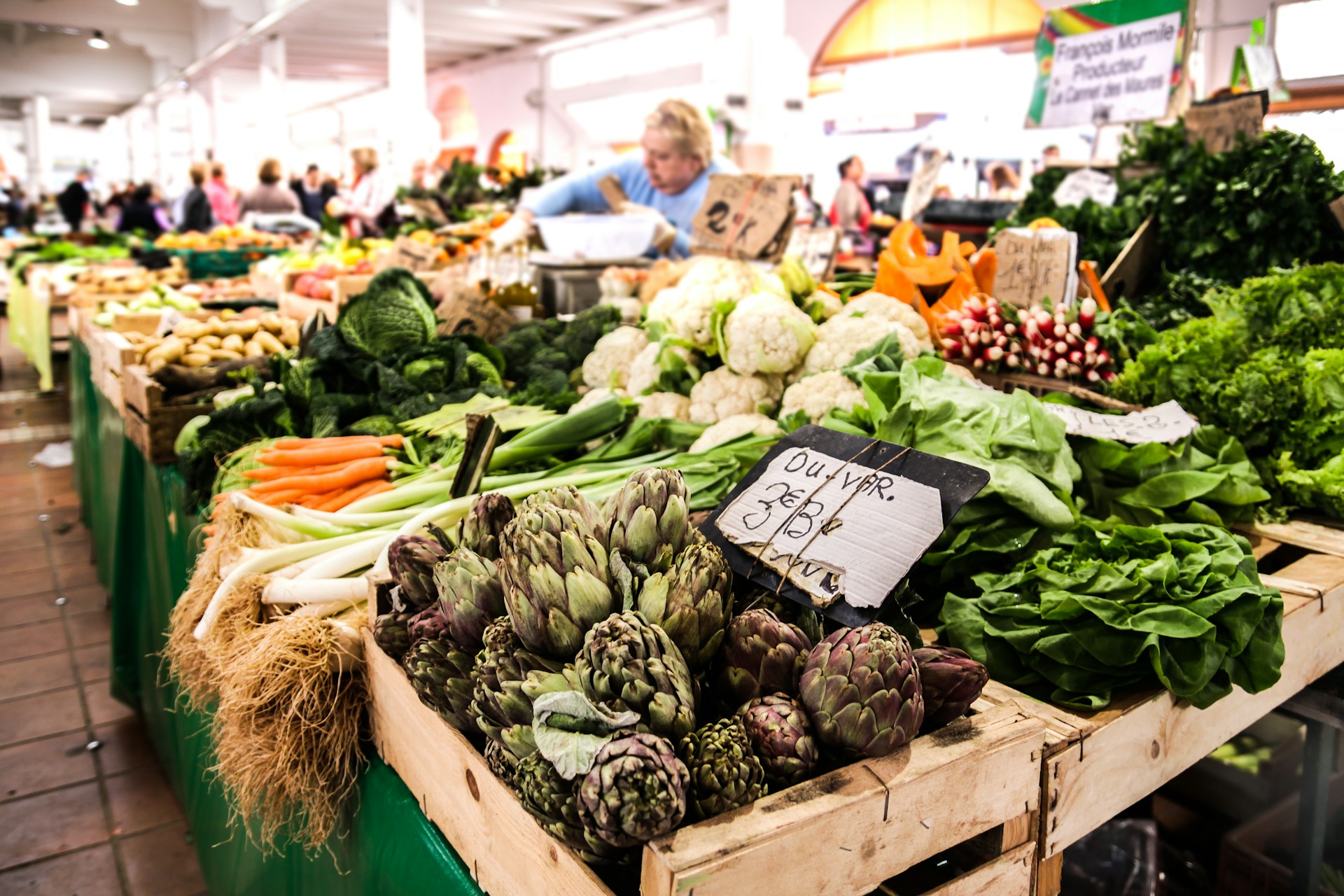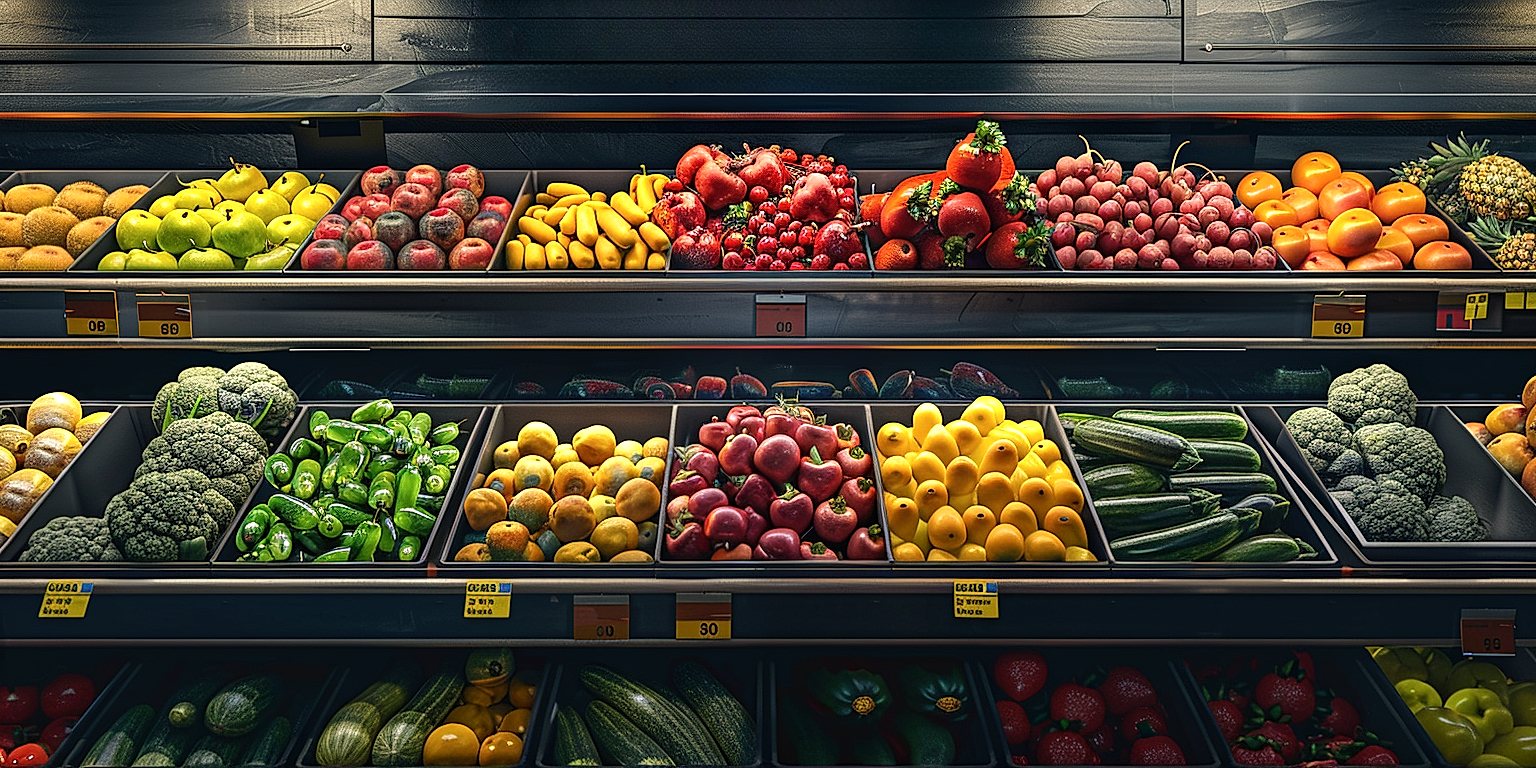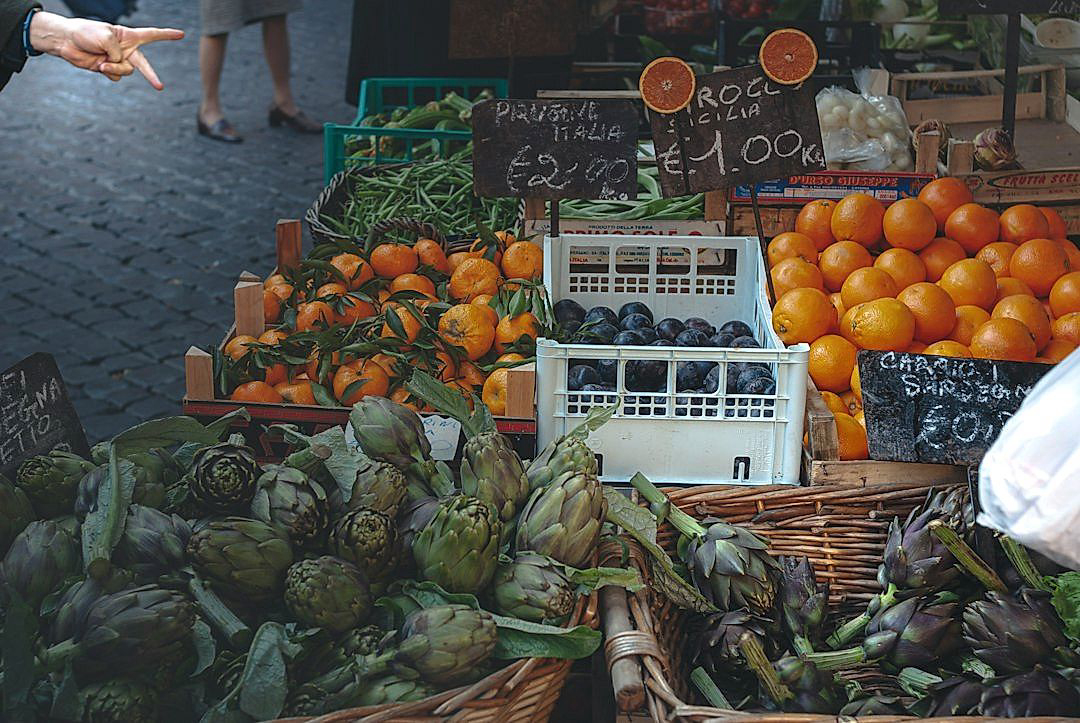As a produce retailer, your goal is to maximize profitability while ensuring consumer satisfaction.
Whether you operate a small shop or a large grocery store, a critical aspect of achieving this involves proper merchandising.
The right tools not only simplify stock management but also enhance visual appeal to attract customers.
In the contemporary marketplace, this element of retail is fueled by innovation and technology.
And it’s not just about a well-ordered shelf; it encompasses forecasting, data analysis, and effective inventory control.
Utilizing specific merchandising tools can make a significant impact on your store’s efficiency, productivity, and overall profitability.
Merchandising Tools Every Produce Retailer Needs
1. High-Quality Produce Display Stands
High-quality produce display stands are essential for presenting fresh fruits and vegetables in an appealing way.
Quality display stands highlight the freshness and visual appeal of the produce, enticing customers to make a purchase.
Stands that are sturdy and can handle the weight of various types of produce are crucial in maintaining a tidy and organized produce section in a store.
Thus, investing in high-quality display stands not only enhances the store’s aesthetic appeal but also demonstrates the retailer’s commitment to delivering only the finest and freshest products to customers.
Customers often visualize the taste and freshness of the produce based on how it is displayed. A well-crafted display can imbue the produce with an air of quality, helping to drive sales up.
More importantly, display stands play a significant role in managing the produce and preventing it from getting spoiled or damaged.
The positioning of the produce on the stands influences how quickly it sells out or manages to retain its freshness.
Thus, the stands need to be designed in such a way that they allow for proper spacing and arrangement of the items.
Equally crucial is the material of the display stands. Products that are sensitive to temperature or humidity changes should be placed on displays that do not absorb heat or moisture.
In the case of direct sunlight exposure, the display stands should be designed to shield the produce, as certain fruits and vegetables are sensitive to direct sunlight.
Many retailers even opt for automated display stands that rotate the produce, ensuring that all customers get a good look at all the items available for sale.
Moreover, getting custom-designed display stands can help retailers utilize their space efficiently and cater to their specific requirements.
The layouts of these stands can also be changed according to the season or type of produce being displayed, making them a flexible merchandising tool.
In the highly competitive retail business, it’s not just about selling products, it’s about creating a shopping experience.
Thus, retailers must invest in high-quality produce display stands to effectively showcase their products and make them irresistible to the buyers.
2. Digital Price Tags and Labeling Tools
The use of digital price tags and labeling tools in a produce retail environment can radically enhance both operational efficiency and the customer shopping experience.
This technological advancement has made real-time price updates on the shop floor possible, thus eliminating the time-consuming task of manually changing price tags.
In addition to showing the price, digital tags can display other relevant information such as discounts, product origin, or nutritional facts.
The flexibility of digital price tags allows produce retailers to quickly respond to changes in the market or inventory levels.
Another advantage is the ability to customize the appearance and layout of digital price tags to match the store’s branding and aesthetic.
This hefty degree of customization can help accentuate the premium or quality nature of the goods being sold.
Beyond aesthetic concerns, digital price tags also improve accuracy and consistency in pricing.
They reduce the risk of mismatches between the prices displayed on the shelves and those at the point of sale, thereby reducing customer dissatisfaction and potential reputational damage for the retailer.
The use of digital labeling tools is also becoming increasingly prevalent in produce retail.
These tools, whether they are handheld devices or software applications, allow for easy printing and application of labels showing product information, barcodes, and price tags.
Beyond just their practical function, digital labels can also be used as a marketing tool.
Digital labels can easily be customized with promotional messages or distinctive designs that catch the customer’s eye and encourage them to make a purchase.
Overall, investing in digital price tags and labeling tools can provide tangible benefits to produce retailers both in terms of improving operations and enhancing the customer experience.
So, while the initial investment may be significant, the potential return in terms of increased sales, reduced labor costs, improved accuracy, and better customer experience makes it a worthy investment.
As the retail landscape continues to evolve and customer expectations continue to rise, stores that can adapt and implement these digital tools effectively will undoubtedly have a competitive advantage.
3. Cold Storage/Display for Sensitive Produce
Many types of produce require specific temperature and humidity conditions to maintain their freshness and quality.
Purchasing and implementing advanced cold storage units is an essential investment for any retailer selling sensitive products.
These units often come equipped with temperature and humidity control features that can be adjusted based on the specific needs of the produce in question.
High-quality cold storage units can dramatically extend the shelf life of your produce, leading to less waste and higher profits.
Cold storage units are not exclusively about maintaining product freshness. They also create a visually appealing display that can draw customers to your produce section.
Transparent glass door fridges or open-air coolers offer a view of your vibrant, fresh produce, enticing customers to make a purchase.
These displays are especially effective for highlighting premium, high-margin produce such as organic fruits and vegetables or exotic imported items.
In addition to standard refrigeration units, there are also specialized storage solutions for specific types of produce.
For instance, banana ripening rooms or ethylene control systems can be used to manage the ripening process of fruits, offering your customers produce at peak freshness.
Furthermore, to ensure optimal operation of these cold storage systems, regular maintenance and calibration is crucial.
This includes tasks such as cleaning air filters or checking temperature sensors, which can unfortunately often be overlooked in a busy retail environment.
However, by planning regular maintenance tasks, you can avoid costly breakdowns and ensure that your cold storage units are running efficiently.
Proper training for your staff is also important so that they can correctly handle, stock, and rotate the produce stored in these units.
Remember, the goal is not just to keep produce cold, but to maintain its quality and appeal to customers.
Investing in good cold storage and display units is just one aspect of maintaining the quality of your goods, but it’s an extremely important one.
With the right tools and practices in place, and consistently well-preserved and attractive produce, your store will stand out among competitors, resulting in increased customer satisfaction and stronger sales.
4. Attractive Produce Baskets and Bins
As a produce retailer, one can’t underestimate the impact of attractive produce baskets and bins on the sales.
These merchandising tools not only serve a functional purpose, but they also contribute to the store’s aesthetic, resulting in a better shopping experience for customers.
Produce baskets and bins need to be visually appealing to attract shoppers’ attention.
The eye-catching designs can indeed become an invitation for customers to browse through your merchandise and choose your produce over others.
The right baskets and bins contribute not only to the store’s visual appeal, but they also play a crucial role in showcasing the freshness and quality of your offerings.
This can be achieved through creative layout, bright colors, or innovative designs that match the store’s theme or aesthetic.
Baskets and bins are not just a means of storage, they enhance the display of produce, making them more attractive to consumers.
Customers appreciate the easy access and organization that baskets and bins provide when shopping for produce.
Additionally, they make the task of restocking easier for your staff, as they are portable and convenient to handle.
Furthermore, quality material of baskets and bins protects your produce from damage and maintains its freshness.
Considering these factors, investing in stylish, durable, and functional produce baskets and bins is a wise decision for any produce retailer.
They become an essential merchandising tool that enhances the presentation of your produce, resulting in a boost in sales.
An attractive basket or bin does more than just hold your produce – it advertises it.
It sets the expectation of quality telling the customers that what they’re buying from you is worth their money.
Therefore, never compromise on the quality and visual appeal of your produce baskets and bins, as they significantly reflect your brand and reputation.
In the realm of produce retailing, clean, clear signage and banners play a critical role in guiding customers through the store, highlighting specific products, and communicating important information in a clear and concise manner.
Their visibility and relevance can outweigh their simple functionality, turning them into effective merchandising tools.
In the ever-changing retail environment, staying current with the latest trends and customer needs is crucial.
Therefore, using flexible digital signage could be a relatively cost-effective tool that provides instant updates and changes as the market dictates.
Moreover, well-thought-out signage and banners not only direct shoppers but also enhance the aesthetics of the retail environment, encouraging customers to browse and ultimately purchase more.
While designing and implementing signage, considering factors such as color, font, size, and positioning can greatly affect its overall effectiveness.
A clean, uncluttered design with a font that is legible from a distance helps ensure the essential information is immediately understood by all your customers.
Indeed, a well-designed, clear, and straightforward sign can act as a silent salesman, leading customers to desired products, and even enticing impulse buys.
Additionally, clear signage and banners can serve as important tools for communicating any ongoing offers, discounts, or seasonal promotions to draw customer attention.
Consider using concise, compelling, and action-oriented language to catch customers’ attention and motivate them to consider items they might not have planned to buy.
The placement of the signs plays a crucial role too, as eye-level signs tend to be more effective than those placed too high or low.
Retailers should pay attention to not overcrowd their store with excessive signage, as this could result in an overwhelming environment for the customers and possibly dilute the impact of the essential messages.
Moreover, being consistent in the use of colors, fonts, and design across all signs throughout the store creates a cohesive brand identity, which enhances customer brand recognition.
Alongside the in-store signage, banners placed outside the store can be used as marketing tools to attract potential customers inside.
Keeping the signs and banners clean, free from dust and grime, and regularly updated can significantly enhance the customer experience and maintain a professional retail atmosphere.
Thus, while often overlooked, signage and banners are undoubtedly an essential part of effective retail merchandising tools, instigating a direct impact on customer purchasing behavior.
6. Handheld Stock Management Devices
The role of handheld stock management devices cannot be understated when discussing crucial merchandising tools for produce retailers.
These devices are an essential part of automating inventory management and maintaining optimal stock levels.
With these tools, every piece of produce can be tracked from the moment it is stocked to the point it leaves the store.
Handheld stock management devices give retailers an edge by offering precise, real-time stock tracking.
This real-time tracking helps to avoid common problems in produce retail such as stock-outs and overstocks.
Stockouts could lead to lost sales and customer dissatisfaction while overstocks result in waste due to the perishable nature of produce.
Moreover, these handheld devices facilitate the accurate planning of orders based on the sales patterns, ensuring that the produce is always fresh and available.
Using these devices, produce retailers can reap the benefits of efficient, automated inventory management.
They allow for easy stocktaking without the need for closing the store or dedicating hours for manual counting.
Stock levels can be adjusted, and discrepancies can be fixed instantly with these devices, saving valuable time.
Additionally, handheld stock management devices are equipped with barcode scanners that ensure error-free entry of product information.
Apart from inventory management, these devices can also aid in pricing management.
The digital prices on the device can be synchronized with the digital price tags in the store, ensuring that the prices are always up-to-date.
Further, these devices can provide crucial sales data analytics, offering insights into fast-moving products, slow sellers, and peak shopping times.
To sum up, handheld stock management devices significantly improve the operational efficiency of a produce retailer, resulting in better customer service and increased profits.
Ultimately, these devices qualify as a necessity rather than a luxury for modern produce retail stores.
7. Customer Shopping Baskets or Carts
When setting up a produce retailer store, one important aspect not to overlook is the inclusion of customer shopping baskets or carts.
These simple but crucial tools play a role in customer convenience, encouraging larger purchases, and enhancing the overall shopping experience.
Customers are more likely to purchase more items if they have a convenient place to carry their selections, highlighting why shopping carts and baskets are essential.
It’s essential that you provide adequate shopping baskets or carts that are easy to carry or push around the store.
Moreover, investing in quality shopping baskets and carts can also contribute to the store’s branding and image, enhancing customer perception.
Additionally, incorporating carts or baskets featuring your store’s logo or complementary colors can help to solidify your brand within the customer’s consciousness.
It also gives the impression of a well-put-together, thoughtful retail establishment.
When it comes to material selection, plastic, metal, or sustainable alternative materials could be considered, each demonstrating different appeals to buyers.
Plastic baskets or carts may be easier to handle and lighter, while metal ones convey sturdiness and durability.
Eco-conscious buyers might also appreciate options made from sustainable materials, demonstrating your store’s commitment to environmentally-friendly practices.
In addition, consider options with extra convenience features like swivel wheels, comfort grip handles, or sections dedicated to delicate produce.
Periodically evaluating the condition of your customer shopping baskets and carts to ensure they remain in optimal working condition is another consideration.
Customers might be discouraged from shopping if they encounter damaged or dirty baskets and carts.
A variety of sizes and types of baskets and carts can cater for all customers’ needs, from those just running in for a few items to those planning a big, weekly shop.
Incorporating customer shopping baskets and carts into your merchandising strategy signifies a dedication to customer convenience and satisfaction, helping to cement positive shopping experiences in your store.
The Bottom Line
Ensuring the visibility, quality, and accessibility of produce in a store requires a combination of various tools and strategies.
Top among these are high-quality produce display stands, digital price tags, and cold storage for sensitive produce.
Additionally, attractive produce baskets and bins, legible signage, and handheld stock management devices play a crucial role.
Not forgetting the importance of providing customers with shopping baskets or carts for a convenient shopping experience.
Therefore, a successful retailer needs to invest in these equipment and tools to enhance the visual appeal of their store, maintain the freshness of their goods, and most importantly, keep their customers satisfied.




